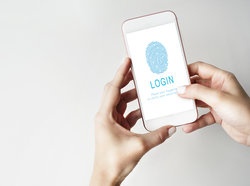10 Ways to Protect Members from Mobile Banking Scams and Hacks
Mobile Banking is expected to hit 3 billion users by 2021. For members, this increases convenience and efficiency. For credit unions, a larger amount of market share is available to gain a younger generation of members and to serve the under-banked. For hackers, the opportunities to steal confidential financial information are abundant!

Hackers are targeting mobile phones and banking apps using malware and phishing schemes, and while security measures on smartphones are becoming more and more sophisticated, the criminals are relentless. Here are 10 reminders for members (and you) to help protect their data when using mobile banking apps:
- Use a Strong Password. No matter how obvious, people still use extremely weak passwords. In fact, according to the NCSC’s global breach analysis, 23.2 million of people who were hacked worldwide used the password “123456”, and 3.6 million used the creative password "password." Yes, we all have a lot of user names and passwords to remember these days, but a simple step of creating a strong password can go a long way in data protection.
- Never Use Public Wi-Fi. The investment into an unlimited data plan will allow you to elect to use cellular data when not on home Wi-Fi. Public Wi-Fi leaves your data vulnerable to the public.
- Use a Phone-Finding App. Our phones are seemingly always on our bodies, but occasionally, they can be misplaced. Apps such as Find My iPhone are free and easy to setup.
- Install an App that Erases the Contents of a Lost Phone. The Apple kill switch - or activation lock - was a feature added to iOS 7 which lets users remotely lock and wipe their iPhones in the event that their phones are stolen or lost. To enable this feature you must first enable “Find my iPhone" (See #3). Android has similar apps.
- Only Use Official Apps from the App Store. On the subject of apps, be sure you are only downloading apps from the official app store for your smartphone.
- Keep Your Apps Updated. Many times, companies supply updates to their apps not to change or improve features, but to fix known security vulnerabilities. Turning on an auto-update feature if your phone allows it will make this step easy to put into practice.
- Log Out After You Use Mobile Banking Software. If a hacker manages to get into your phone, add the extra layer of protection and ensure you are not logged in to your mobile app
- Don’t Save Passwords or Usernames in Your Browser. This is probably the hardest one to implement, as it is very convenient to save user names and passwords for sites, and most browsers provide the option with a convenient pop-up window. But if your phone is stolen and hackers know where to look, it gives them free rein into your various accounts. Using an app such as LastPass is worthwhile
- Use Facial Recognition and Fingerprint Technology. Don't bypass the new ultra-effective security features most phones offer
- Know what Phishing Looks Like. Hackers are getting very creative! Be aware of the different types of phishing attacks so you can recognize it when (not if) it happens to you. Take a look at our article, Two-factor Authentication for Financial Accounts, to learn more about phishing attacks.
Keeping in mind that there may always be someone lurking trying to find a way around mobile banking and app security measures, be vigilant about your behaviors to help yourself stay protected.



